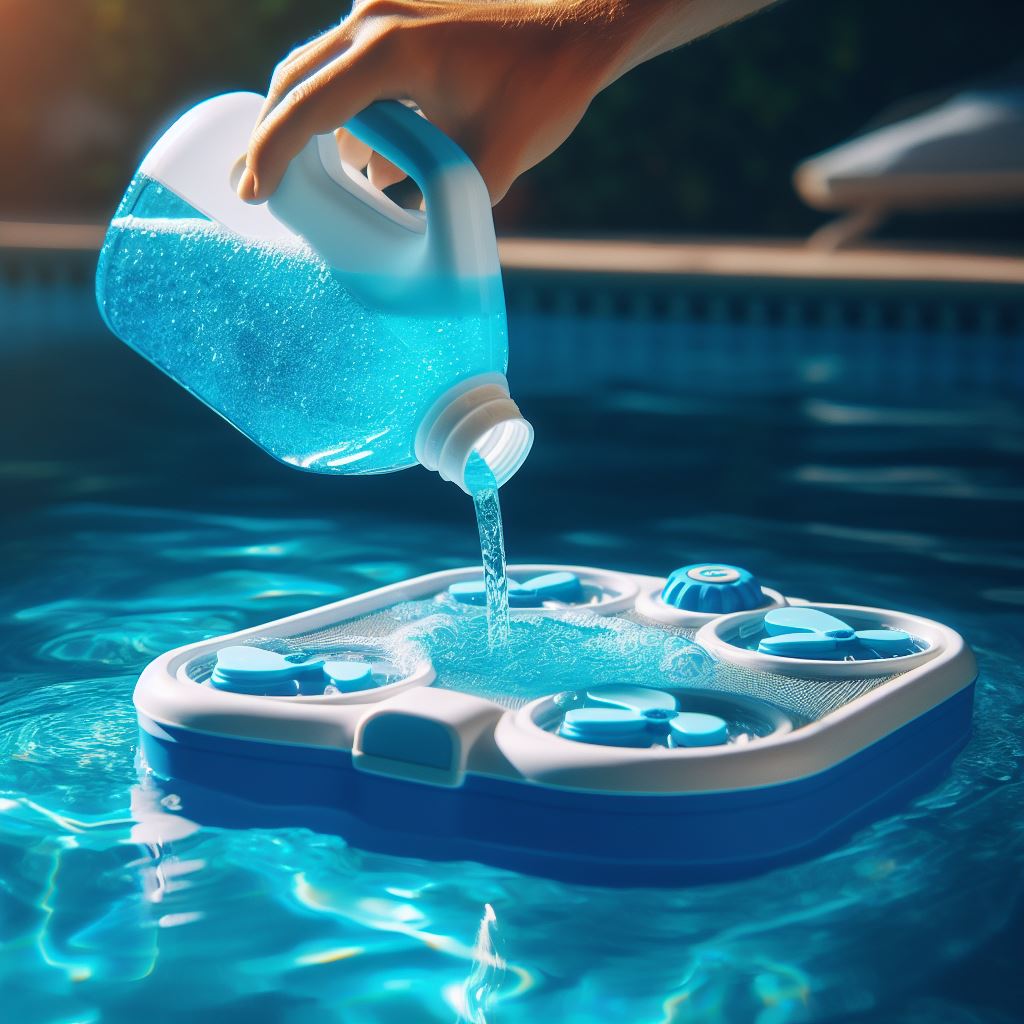When it comes to maintaining a clean and healthy swimming pool, using a chlorine floater for pool is one of the most effective strategies. Many pool owners are now turning to this simple yet efficient device to keep their water sanitized. But how can you get the most out of your chlorine floater? In this article, we’ll explore essential tips for using a chlorine floater effectively, so you can enjoy crystal-clear water all summer long.

I.Understanding the Chlorine Floater
Before diving into the tips, let’s briefly discuss what a pool chlorine dispenser is. A chlorine floater is a device that holds chlorine tablets and floats on the water’s surface. As the water circulates, the floater gradually releases chlorine into the pool, maintaining consistent sanitation levels. This method is particularly convenient for those who want to streamline their pool maintenance routine.
II.Choosing the Right Chlorine Floater
To maximize your experience, start by selecting the right chlorine floater for pool. You can find various designs and sizes, so consider your pool’s size and the type of chlorine tablets you intend to use. It’s crucial to choose a floater that can accommodate the number of tablets required for your pool size. Additionally, look for a floater with adjustable release settings, as this feature allows you to control how quickly the chlorine is dispensed.
III.Proper Placement of the Floater
Once you’ve decided to buy a chlorine floater, the next step is proper placement. The floater should be placed in an area of the pool where water circulation is strong, such as near a return jet. This positioning ensures that the chlorine disperses evenly throughout the pool. Avoid placing it in corners or areas with stagnant water, as this can lead to uneven chlorine distribution and potential algae growth.
IV.Monitoring Chlorine Levels
One of the most critical aspects of using a pool chlorine dispenser is monitoring chlorine levels regularly. Even though the floater does a great job of releasing chlorine, external factors such as heavy rainfall, high bather load, or high temperatures can affect chlorine levels. Test the water at least once a week using a pool testing kit. Aim for a chlorine level between 1 and 3 parts per million (ppm) for optimal sanitation. If levels drop below this range, consider adding more chlorine tablets to your floater.
V.Adjusting the Release Rate
Many chlorine floaters come with adjustable settings, allowing you to control how quickly the chlorine is dispensed. If you notice that your pool’s chlorine levels are consistently low, try increasing the release rate. Conversely, if your water seems overly chlorinated or has a strong chemical smell, decrease the release rate. This flexibility helps you tailor the floater’s performance to your specific pool needs.
VI.Regular Cleaning of the Floater
Like any other piece of pool equipment, your chlorine floater for pool needs regular cleaning to ensure optimal performance. Algae, debris, and other contaminants can accumulate on the floater over time, which can hinder its ability to dispense chlorine effectively. To clean it, remove the floater from the pool and rinse it with fresh water. A soft brush can help remove any stubborn buildup. Be sure to clean it thoroughly before placing it back in the pool.
VII.Replacing Chlorine Tablets
It’s essential to replace the chlorine tablets in your floater regularly. Depending on your pool size and the floater’s release settings, you might need to refill it every week or every few weeks. Always use high-quality chlorine tablets designed for floaters to ensure efficient chlorination. When adding new tablets, remove the floater from the pool, refill it, and then return it to the water.
VIII.Consider the Season
During different seasons, the chlorine needs of your pool may vary. For instance, during the summer months when pool use increases, you might need to add chlorine tablets more frequently. In contrast, during cooler months, when the pool is used less, you can reduce the amount of chlorine used. Adjusting your floater’s settings based on the season helps maintain balanced water chemistry and enhances your pool’s overall health.
IX.Combining with Other Pool Maintenance Practices
While a chlorine floater is an excellent tool for maintaining water quality, it should not be the only method you rely on. Combine its use with other maintenance practices, such as regular skimming, vacuuming, and filter cleaning. These tasks help remove debris and contaminants that can impact your pool’s water quality. Additionally, consider using algaecides and clarifiers to keep your pool looking its best.
X.Know When to Seek Professional Help
If you find that your pool’s water quality is still not meeting your standards, despite using a pool chlorine dispenser, it might be time to seek professional help. Pool maintenance experts can perform comprehensive water tests and identify underlying issues that may not be apparent. They can also offer tailored advice on improving your pool’s sanitation practices.

XI.Conclusion
Using a chlorine floater for pool maintenance can simplify your routine and help you achieve sparkling clean water. By choosing the right floater, placing it correctly, monitoring chlorine levels, and adjusting settings as needed, you can maximize its effectiveness. Remember to clean the floater regularly, replace chlorine tablets, and combine its use with other maintenance practices for the best results.
By following these tips, you’ll not only enhance your pool experience but also ensure a safe and enjoyable swimming environment for your family and friends. So, if you’re ready to streamline your pool maintenance, consider investing in a chlorine floater and enjoy the benefits it brings!
 Instant
Quote
Instant
Quote Email
Us
Email
Us